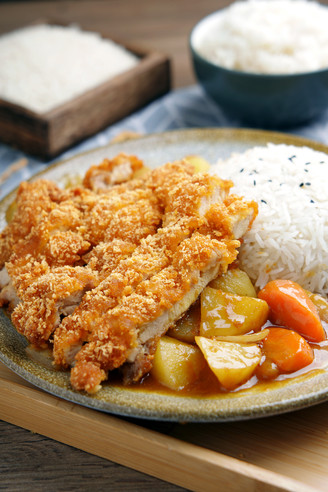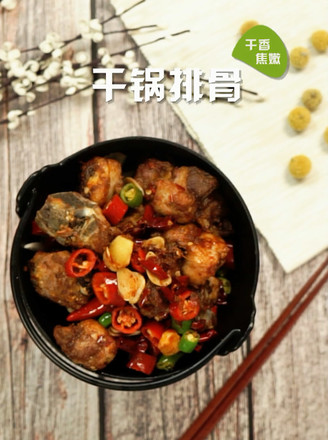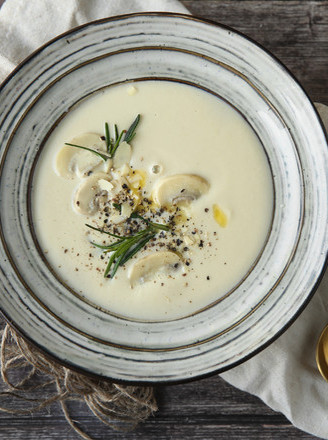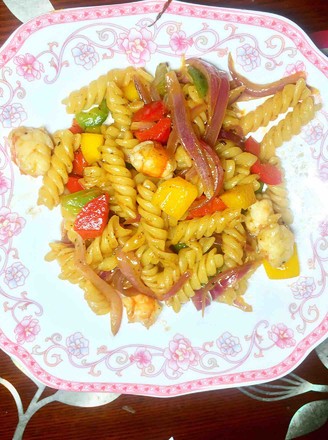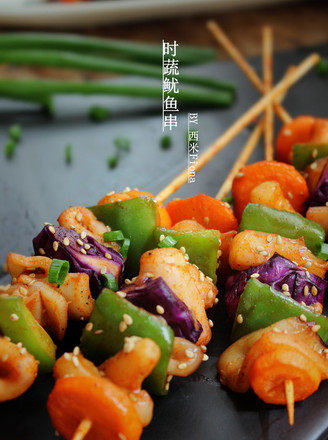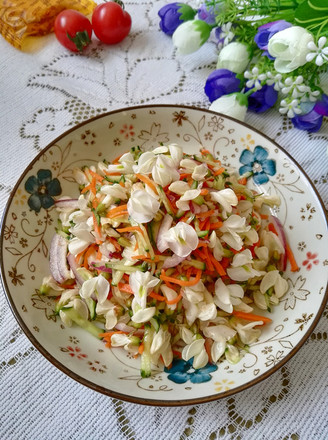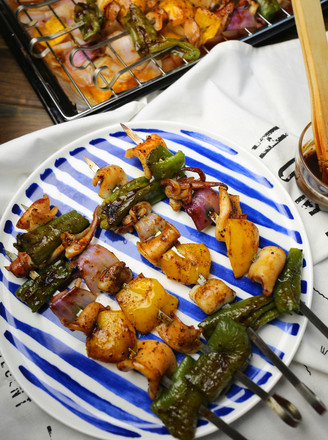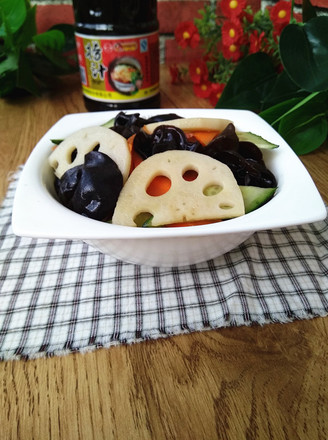[traditional British Christmas Pickles]
1.
Raw material map: onion
2.
Raw material map: garlic
3.
Raw material map: tomatoes.
4.
Raw material map: bell pepper and eggplant
5.
seasoning
6.
Coriander seed powder: optional
7.
Cut the onion into pieces.
8.
Finely chop garlic. Without adding oil, add onion and garlic to a large saucepan and heat over medium heat. Vegetables will produce water by themselves, so don't worry about mashing the pot. If you are worried, add a little salt to speed up the water. From then on, stir from time to time to allow the ingredients to heat up evenly.
9.
Next, peel the tomatoes. Wash and draw a cross on the top.
10.
Put it in a pot and add boiling water to cover the tomatoes.
11.
Wait 1-2 minutes until the skin cracks. Take it out (be careful of hot hands!).
12.
Let cool and peel.
13.
Cut into pieces and add to the pot.
14.
Cut the bell pepper into pieces and add to the pot.
15.
Cut the eggplant into pieces and add to the pot.
16.
A lot of water came out of the vegetables at this time! Wait for the pot to boil, add various seasonings, and then collect the juice over medium heat. At this time, stir it from time to time, because there is a lot of sugar, it is easy to paste the pot now, especially the more viscous it goes to the end, the easier it is to paste the pot. It is best to go to the final stage, change the fire to a low temperature, keep stirring, and never paste it.
17.
Let cool and peel off
18.
When collecting the juice, prepare the bottle. Wash the bottle and heat sterilize it. Use a glass bottle with a metal lid. The lid and the bottle must be able to fit tightly. Sterilize a few more bottles just in case. Generally, jars of jam and sauce are heat-resistant, because manufacturers also need to heat and sterilize them. If the bottle is not heat-resistant, you can see it when you sterilize it now, so don't use it. The most convenient method is steaming, at least 20 minutes, the bottle and lid should be mouth down to avoid accumulation of water. The utensils have to be steamed in the pot until they are bottled.
19.
My steamer is too small to hold, so I only steamed the bottle cap. I put the bottle in the oven at 150 degrees. (Because my bottle cap has a layer of rubber, it will stick in the oven!
20.
30-40 minutes, until you can see big bubbles, the pot seems to be jam, set the vegetables to the side, basically no excess liquid is precipitated.
21.
Prepare heat-resistant clamps, wooden boards, gloves, etc., and start bottling: Be careful of hot hands, and the kids leave! Use heat-resistant clips and gloves/towels. Take out a bottle, put it on the heat insulation board, and pour in the cooked pickles while it is hot. It's better to have a large hole funnel. I don't have one, so I have to fill it with spoonfuls. Try to make no holes in the middle. Fill it up to almost full, leaving a little space to take it out as it cools down.
22.
Wipe the mouth of the bottle with clean paper or cloth, find the corresponding cap of the bottle, and close it completely while it is hot. After cooling in this way, the little air we leave will shrink, and our bottle will be vacuum sealed like a normal can! Then fill the bottles one by one until all the pickles are used up. finished!

![[traditional British Christmas Pickles] recipe [traditional British Christmas Pickles] recipe](https://img.simplechinesefood.com/fb/fb6a2d0c335da70de97d974183b7a6e8.JPG)
Tips:
1. Choose tomatoes that are thick and sweet; sweet peppers should be of different colors; white vinegar, preferably white wine vinegar, or apple cider vinegar, if there is really no... use cheap white vinegar, for The thing is to try to avoid the Chinese food taste of rice vinegar; only use a small spoonful of salt, because this kind of pickles is pickled with sugar and vinegar instead of salt. Don’t put too much salt in it like making pickles or kimchi; chili powder, I I like to add several different kinds of chili at the same time, this kind of spiciness is more complex and fuller; the coriander seed powder itself does not have much flavor, but it can make other flavors thicker, so you don't need it if you don't have it.
2. It is best to use a special pickled bottle, mine is leftovers for jam and condiments. Insulation boards (mine is a wooden cutting board), heat-resistant clips, simple disinfection tools such as steamers, etc. should be prepared in advance. There are several steps to be particularly careful when making to avoid burns.
3. The best aspect of this pickle is that you can see the whole dish instead of completely resembling jam, so don't cut the dish too small, and don't stir it too hard.
4. Store in a cabinet where the temperature is not too high. If stored in the refrigerator, the taste will mix slowly, and it may take at least 3 months to taste delicious. The last thing to note is that if you find any abnormalities when opening the lid, don't eat it.

![[traditional British Christmas Pickles] [traditional British Christmas Pickles]](https://img.simplechinesefood.com/f6/f663c3ca014be6d3bdd530acebbf4b23.jpg)
![[traditional British Christmas Pickles] recipe [traditional British Christmas Pickles] recipe](https://img.simplechinesefood.com/a9/a9b8f3ba3ade582f3625ae8d5546293f.jpg)
![[traditional British Christmas Pickles] recipe [traditional British Christmas Pickles] recipe](https://img.simplechinesefood.com/ff/ffad1b431f1ab81d3c1f909f537ecf9c.JPG)
![[traditional British Christmas Pickles] recipe [traditional British Christmas Pickles] recipe](https://img.simplechinesefood.com/8b/8b78b888ac0f6de48796fe9162ef7d9b.JPG)
![[traditional British Christmas Pickles] recipe [traditional British Christmas Pickles] recipe](https://img.simplechinesefood.com/bf/bf8c352504d8fc6528753521d833b92a.JPG)
![[traditional British Christmas Pickles] recipe [traditional British Christmas Pickles] recipe](https://img.simplechinesefood.com/5c/5cd3eee2ecdd6c27f9f01d28bcd8499d.JPG)
![[traditional British Christmas Pickles] recipe [traditional British Christmas Pickles] recipe](https://img.simplechinesefood.com/2c/2c5f1955b7801bc9d30be9d2edbeb5b0.JPG)
![[traditional British Christmas Pickles] recipe [traditional British Christmas Pickles] recipe](https://img.simplechinesefood.com/f2/f231f419641f70d58a2d0cff00476993.JPG)
![[traditional British Christmas Pickles] recipe [traditional British Christmas Pickles] recipe](https://img.simplechinesefood.com/08/083d16200b24adcd786df5ae4f8558d9.JPG)
![[traditional British Christmas Pickles] recipe [traditional British Christmas Pickles] recipe](https://img.simplechinesefood.com/c3/c397bedefdb9d260ef1e2f53ad421532.JPG)
![[traditional British Christmas Pickles] recipe [traditional British Christmas Pickles] recipe](https://img.simplechinesefood.com/7c/7cbb8dd1e1ae9ebcccfd5486ea032106.JPG)
![[traditional British Christmas Pickles] recipe [traditional British Christmas Pickles] recipe](https://img.simplechinesefood.com/e1/e13153892150985863af138b9c9ef2f0.JPG)
![[traditional British Christmas Pickles] recipe [traditional British Christmas Pickles] recipe](https://img.simplechinesefood.com/4b/4b4068de63fcc05f10a57b67cfef68b5.JPG)
![[traditional British Christmas Pickles] recipe [traditional British Christmas Pickles] recipe](https://img.simplechinesefood.com/e6/e66af9fc6440b1e8c821bc2f3315dc44.JPG)
![[traditional British Christmas Pickles] recipe [traditional British Christmas Pickles] recipe](https://img.simplechinesefood.com/37/372f3501134edd2e988f51fd195e801d.JPG)
![[traditional British Christmas Pickles] recipe [traditional British Christmas Pickles] recipe](https://img.simplechinesefood.com/88/88e256761d69c3264b000472f1d6b550.JPG)
![[traditional British Christmas Pickles] recipe [traditional British Christmas Pickles] recipe](https://img.simplechinesefood.com/6f/6fe7c64c86df84631e2b12ae44b69ee0.JPG)
![[traditional British Christmas Pickles] recipe [traditional British Christmas Pickles] recipe](https://img.simplechinesefood.com/c9/c96e29fdc073bff74576f085af414b94)
![[traditional British Christmas Pickles] recipe [traditional British Christmas Pickles] recipe](https://img.simplechinesefood.com/23/23373303e76a14b6dd5a3f724b963d5c.JPG)
![[traditional British Christmas Pickles] recipe [traditional British Christmas Pickles] recipe](https://img.simplechinesefood.com/9c/9cf6f6a1423ab4e58ccbd26dd2cc4e34.JPG)
![[traditional British Christmas Pickles] recipe [traditional British Christmas Pickles] recipe](https://img.simplechinesefood.com/b5/b57090a04e2e7b4ecfa03bc793234ede.JPG)
![[traditional British Christmas Pickles] recipe [traditional British Christmas Pickles] recipe](https://img.simplechinesefood.com/0f/0fa06f30c48a1f63928cb1132c7c3317.JPG)
![[traditional British Christmas Pickles] recipe [traditional British Christmas Pickles] recipe](https://img.simplechinesefood.com/fb/fb6a2d0c335da70de97d974183b7a6e8.JPG)
